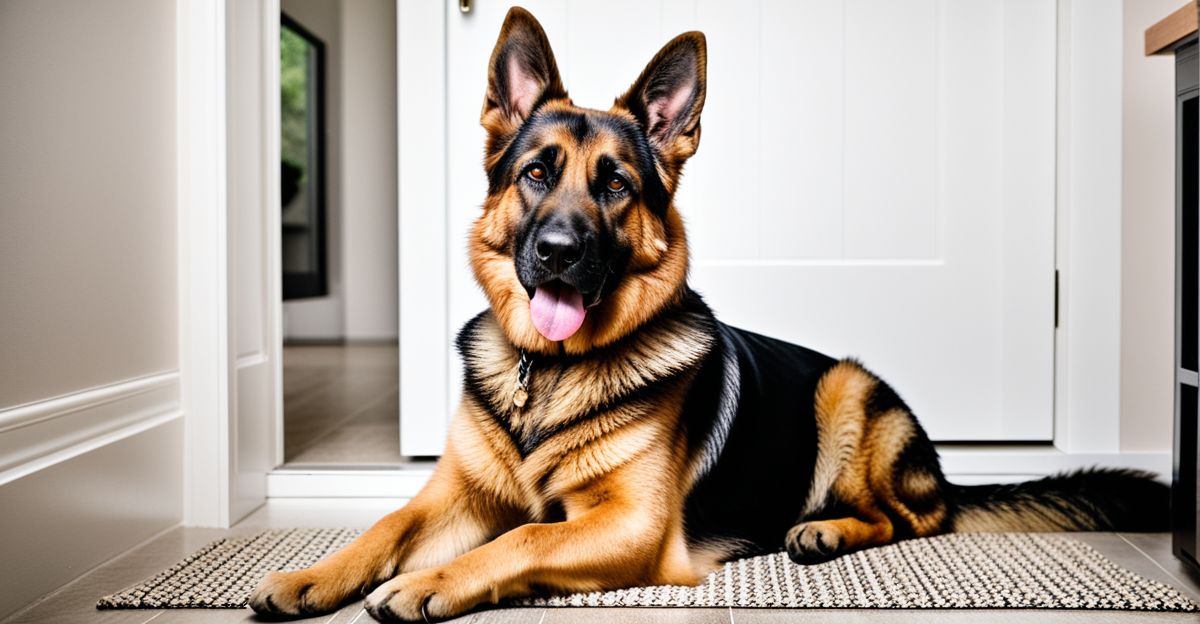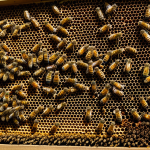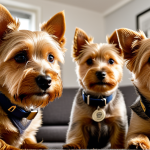Understanding the Protective Instincts of German Shepherds
German Shepherds are renowned for their protective behavior, which is an inherent part of their nature. By understanding these German Shepherd traits, owners can better manage their dogs in various social settings. These instinctual behaviors can impact interactions with guests, making it crucial to recognize the signs of protective instincts early.
In a home environment, German Shepherds may perceive visitors as potential threats. Recognizing this can help owners prepare for guest interactions effectively. Protective behavior is closely linked to the breed’s intelligence and loyalty, traits that make them excellent guard dogs. However, in a social context, this can mean they are wary of strangers, requiring careful oversight during initial interactions.
Also read : Effective Techniques to Ease Separation Anxiety in Boxers Left Home Alone for Extended Periods
Owners should monitor their dog’s body language and vocalizations, such as barking or growling, as indicators of their protective instincts. Appropriately addressing these behaviors facilitates safer and more positive interactions for everyone involved. For guests, understanding and respecting the dog’s boundaries will lead to a more harmonious entrance into the dog’s territory. By acknowledging these German Shepherd traits, you not only ensure safety but also nurture a trusting relationship with this unique and loyal breed.
Preparing Your Home for Guest Introductions
A well-thought-out home setup is crucial in managing guest interactions with a German Shepherd. Implementing specific safety measures can make this process smoother for all parties involved. Here’s how:
Also read : Ultimate Nutritional Handbook for Pregnant Great Danes: Tailoring Their Diet for Optimal Health
Start by creating a secure space using gates and crates, providing the dog a refuge away from visitors. This setup offers the German Shepherd a sense of control, making interactions less stressful. When introducing guests, using a leash helps manage the initial excitement, maintaining safe boundaries.
Setting an environment of calmness is vital. This involves ensuring that both dog and guests feel comfortable in the shared space. Consider providing guests with clear guidelines before their arrival; this includes not directly approaching the dog and, if needed, allowing the dog to initiate contact.
In addition, ensure the seating arrangement doesn’t crowd the dog’s space, offering them freedom to retreat if they wish. This facilitates a safer atmosphere, allowing your German Shepherd to interact on their terms. By employing these strategies, both guests and dogs can enjoy positive, stress-free interactions.
Training Your German Shepherd for Guest Interactions
Successfully integrating your German Shepherd into social settings relies heavily on effective dog training and behavior modification.
Basic Command Training
Teaching essential commands such as “sit,” “stay,” and “leave it” forms the foundation for managing protective behavior. A well-trained German Shepherd can more easily discern safe guests from potential threats, reducing stress during interactions.
Socialization Techniques
Gradual exposure to various people and environments helps your dog become accustomed to different stimuli. Begin with controlled environments, exposing the dog to new faces and settings gradually, which helps reduce anxiety and promote friendly behavior. Consistent socialization is key in managing the breed’s protective instincts effectively.
Reinforcement Strategies
Implement positive reinforcement techniques like treats and praise to encourage calm and appropriate behavior around guests. By rewarding your German Shepherd when they maintain composure, you reinforce learned behaviors and alleviate protective instincts. Through consistent reinforcement, your dog learns to associate guests with positive experiences, helping to foster a more relaxed home atmosphere.
By focusing on these training strategies, owners can ease their German Shepherds into social settings, creating a safer and more enjoyable environment for everyone involved.
Step-by-Step Guide to Introducing Guests
For a seamless guest introduction, setting the stage for meeting your German Shepherd is essential. Begin by choosing a timing and setting that minimises stress. Opt for a quiet time of day when your dog is relaxed. A familiar environment where your German Shepherd feels secure will aid in a positive interaction.
Monitor your dog’s behavior closely, observing for signs of stress such as pacing or excessive barking. A calm atmosphere encourages a smooth first meeting.
Interaction protocols are critical. Have the guest approach the dog slowly, avoiding direct eye contact that might be seen as confrontational. Guests should allow the dog to initiate contact, offering sniffing as a non-threatening introduction method.
To control the situation, maintain a safe distance initially, using a leash to manage your dog’s movements. Employ positive reinforcement through gentle praise if your German Shepherd displays calm behavior, reinforcing this as the desired reaction.
Provide clear guidelines to guests regarding handling your dog, ensuring they understand not to force interaction. By following this step-by-step guide, you facilitate a safe and welcoming environment for both your dog and your guests.
Managing Guest Interactions During Visits
To ensure a peaceful and safe engagement between your German Shepherd and visitors, careful supervision techniques are necessary. Continuously observe the dynamics of guest-dog interactions to promote harmony. Encourage guests to engage calmly and confidently, respecting the dog’s territory.
Simple guidelines can make a difference:
- Calm Approach: Advise guests to approach the dog with a relaxed demeanor. Sudden movements can trigger protective behavior.
- Respectful Distance: Encourage maintaining an appropriate distance and allowing the shepherd to initiate contact. Watching for the dog’s cues fosters positive interactions.
Being attuned to your dog’s body language is crucial. Signs like excessive barking, pacing, or growling indicate discomfort. Recognizing these stress signals allows for timely intervention, preventing escalations and ensuring a comfortable environment for everyone.
When necessary, redirect your dog’s energy with familiar commands or distractions. Encourage guests to remain still until the dog calms down, reinforcing this state with positive attention or treats. Educating guests about these supervision techniques not only reassures them but also maintains your German Shepherd’s safety and comfort.
Addressing Common Concerns of Guests
Many guests experience guest anxiety when interacting with protective dogs like German Shepherds. It’s crucial to understand and alleviate these fears by providing insights into dog behavior reassurance. German Shepherds, renowned for their loyalty, can appear intimidating at first. Guests might worry about aggressive responses, especially if unfamiliar with the breed’s demeanor.
To ease these concerns, initiate open conversations about the German Shepherd’s temperament. Explaining the dog’s routine, such as regular behavior reinforcement strategies, can reassure guests of your dog’s stable nature. Highlighting the dog’s positive interactions with previous visitors can also build confidence.
Strategies to reassure include demonstrating basic commands that showcase your German Shepherd’s adherence to instructions. This not only displays the dog’s training but also comfort guests by showing control over the dog’s actions.
Providing clear and concise information on German Shepherd behavior helps demystify the breed’s instincts. Emphasizing the dog’s trained nature and emphasizing consistent guest-dog interaction supervision promotes a positive perception. By implementing calming measures, you can transform the visit into a pleasant experience, overcoming initial apprehensions.
Long-Term Strategies for a Harmonious Household
Creating a harmonious household with a German Shepherd involves dedication to ongoing training and integrating them into your family dynamics. This ensures your dog remains a well-behaved family member for the long term. Regular training sessions are crucial to reinforce positive behaviors. Consistency in training helps maintain the commands and social skills your dog has learned, preventing any regression.
Involving the whole family in the dog’s socialization process ensures everyone knows how to interact positively with the dog. This collective approach spreads responsibility and emphasizes the importance of consistent behavior reinforcement from all household members. It also provides the dog with multiple social experiences, enhancing their adaptability to various family interactions.
Monitoring guest interactions over time is equally important. By consistently observing your dog’s responses to guests, you can make timely corrections and reinforce positive behavior, cementing your German Shepherd’s social etiquette. This continuous observation and adjustment ensure that social settings are always managed with ease.
In summary, ongoing dedication to training sessions, family involvement, and consistency in monitoring interactions will lead to a content, well-adjusted German Shepherd, making for a peaceful household environment.
Real-Life Scenarios and Solutions
Exploring practical examples can help you navigate guest interactions with your German Shepherd. Consider a situation where a new guest is nervous about your dog’s protective instincts. The solution? Use calm introductions, allowing the dog to approach in its own time. This respects everyone’s boundaries and promotes a relaxed atmosphere.
One scenario involves a guest reacting to the dog’s loud barking at the door. Problem solving here involves teaching your Shepherd a command to retreat to a designated space when the doorbell rings. This learned behavior reassures guests and transforms loud greetings into more controlled interactions.
When dealing with guests unaccustomed to dogs, smaller steps like a gradual introduction process may be needed. For individual personalities, tailor your approach according to both guest and dog comfort levels to create a relaxed setting.
Lessons learned from previous interactions highlight assessing both dog and guest comfort throughout the visit. By focusing on each scenario’s unique facets, and refining strategies, you manage guest anxiety and build confidence in handling diverse guest-dog situations. This adaptive approach fosters positive experiences for everyone involved, ensuring harmonious engagements.









